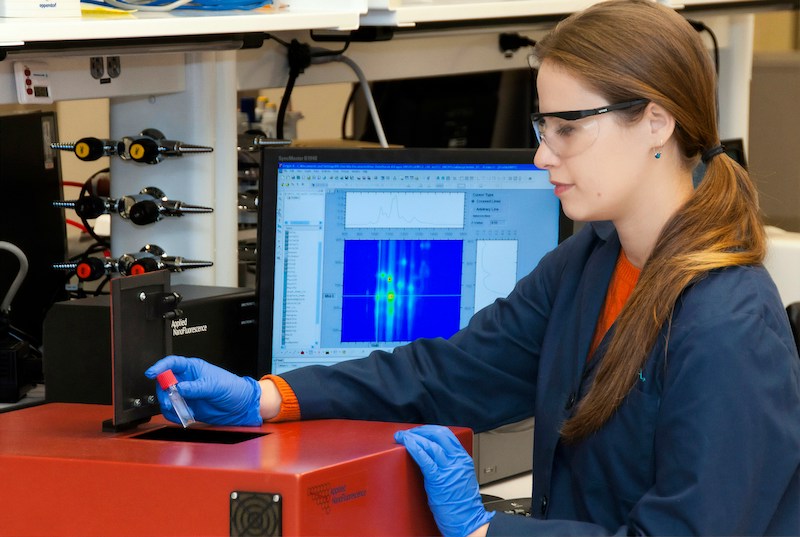From Marie Curie to Ada Lovelace, women have made significant contributions to science, technology, engineering, and mathematics (STEM) fields throughout history. However, the underrepresentation of women in these industries persists, creating a gender gap that must be addressed. So what is STEM?
STEM is an acronym that stands for:
- Science
- Technology
- Engineering
- Mathematics
It refers to the academic disciplines of science, technology, engineering and mathematics. STEM is a widely accepted term used in education and workforce development.
Despite advancements in gender equality, women remain significantly underrepresented in STEM careers. This lack of diversity not only deprives industries of valuable perspectives and ideas but also hinders societal progress. It is crucial to understand the barriers that women face in pursuing STEM careers and work towards creating inclusive environments that empower and support them.
STEM provides technical skills that are applicable across many different industries and job types. Fields like computer science, healthcare, construction all rely heavily on STEM skills.
Education systems are promoting STEM subjects as a way to develop problem-solving, critical thinking and innovation. This helps prepare students for 21st century careers.
Many governments invest in STEM programs to encourage learning and boost participation in STEM-related careers. This is seen as important for economic growth.
Women and minorities are historically underrepresented in STEM fields. Efforts are being made to promote diversity and inclusion in the STEM workforce.
Hands-on, project-based learning is emphasized in STEM along with collaboration. This mirrors how STEM professionals work in real world job environments.
So in summary, STEM refers broadly to the integration of Science, Technology, Engineering and Math both as academic subjects and important career cluster domains. It encompasses diverse industries and important job skills of the future.
The Importance of Diversity in STEM
Diversity in STEM brings a multitude of benefits. Research has shown that diverse teams are more innovative, creative, and produce higher-impact results. Different perspectives and experiences foster unique problem-solving approaches, leading to breakthrough discoveries and advancements.
Barriers Faced by Women in STEM
Several barriers contribute to the underrepresentation of women in STEM fields. Stereotypes and biases, lack of representation and role models, the gender pay gap, and work-life balance challenges all play a role in discouraging women from pursuing and thriving in STEM careers.
Stereotypes and biases perpetuate the notion that certain fields are better suited for men, leading to a lack of confidence and self-doubt among women. Additionally, the absence of visible female role models and mentors in STEM further diminishes aspirations and opportunities for women.
The gender pay gap remains a persistent issue in STEM, with women earning 35% less than their male counterparts. This disparity not only affects financial security but also perpetuates the belief that women are undervalued in these fields.
Work-life balance challenges, such as long hours and limited flexibility, can be particularly burdensome for women who often face societal expectations and responsibilities outside of work.
Initiatives and Solutions
Addressing the gender gap in STEM requires a comprehensive approach. Here are some key initiatives and solutions that can help create a more inclusive environment:
Promoting STEM education for girls: Encouraging girls to pursue STEM subjects from an early age can foster interest and confidence in these fields.
Encouraging mentorship and support networks: Establishing mentorship programs and support networks can provide guidance and opportunities for women in STEM, offering invaluable advice and connections.
Addressing biases and promoting inclusive work environments: Companies and organizations must actively address biases and create inclusive cultures that value diversity. This includes implementing fair hiring practices, providing equal opportunities for career advancement, and establishing policies that support work-life balance.
Success Stories and Role Models
Highlighting the achievements of women in STEM can inspire and motivate others. Sharing success stories and showcasing female role models can help combat the lack of representation and serve as a reminder that women have made significant contributions to STEM throughout history.
Future Outlook
Efforts to bridge the gender gap in STEM must continue. It is essential to advocate for gender equality and diversity in these fields, ensuring that women have equal opportunities, representation, and support to pursue and succeed in STEM careers.
Common examples of careers in STEM fields includes:
Engineer – Civil, mechanical, electrical, chemical, computer, environmental, biomedical etc. Engineering careers apply math and science principles to design, build and maintain various infrastructure and technologies.
Computer scientist – Jobs involving the theoretical foundations of information and computation, including systems analysis, programming and software development.
Physicist – Careers applying principles of physics, often focused on specialized areas like materials science, nuclear physics, astronomy, acoustics etc. Used in both research and industry.
Mathematician – Jobs utilizing mathematics to solve complex problems across many domains. Work in fields like cryptography, data science, statistics, economics and more.
Doctor/nurse – Medical professionals incorporating significant science and technology knowledge into patient diagnosis and treatment.
Scientist – Research-focused roles in various science disciplines from biology and chemistry to geology, oceanography and more. Work in labs, universities, government agencies.
Technology professional – Jobs centered around developing and applying new technologies like AI, robotics, IoT, cloud computing, cybersecurity, augmented/virtual reality etc.
Educator – Teachers inspiring future generations by bringing STEM subjects to life in K-12 schools and higher education settings.
Researcher – Conduct innovative experiments and investigations across all STEM fields to advance scientific frontiers.
The underrepresentation of women in STEM fields is a significant challenge that must be addressed. By recognizing the importance of diversity, understanding the barriers faced by women, and implementing initiatives to promote inclusivity, we can bridge the gender gap in STEM. Let us strive for a future where women are equally represented, valued, and empowered in all aspects of STEM. Together, we can create a more innovative, equitable, and prosperous world.
ZMSEND.com is a technology consultancy firm for design and custom code projects, with fixed monthly plans and 24/7 worldwide support.


